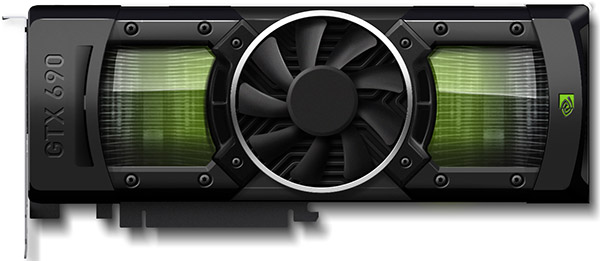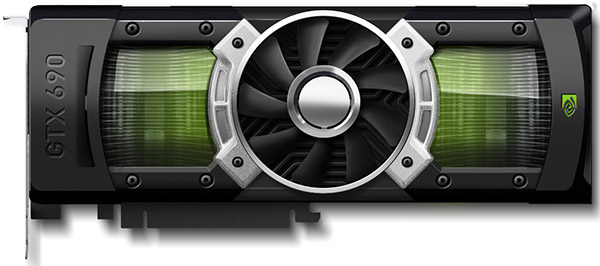The Story Of How GeForce GTX 690 And Titan Came To Be
When something impresses me, I want to know more, whether it's wine, music, or technology. Months ago, Nvidia dropped off its GeForce GTX 690 and I didn’t know whether to game on it or put it in a frame. This is the story of its conception.
“The 250 W ID”: Making A Graphics Card Sexy
When you sit down and talk to two people responsible for so much of what a product like GeForce GTX 680, and then all of the other 600- and 700-series boards look like, you can’t help but develop a deep sense of appreciation for what is involved in creating that graphics card. No doubt, the same interplay happens at AMD. But in the case of GeForce GTX 680, Jonah’s team modeled GK104 prior to taping out the photomask for manufacturing, creating an approximate power target. Andrew’s group used that number, added some margin in case the model was off, and built a card capable of accommodating the new GPU.
In fact, the board guys went a step further. Back in the Fermi days, they built one card and made it work at multiple power points. Because add-in board partners take the GPUs and drop them onto their own implementations, that approach was fine. However, this time Nvidia designed three—250, 225, and 200 W—and picked the most complementary to launch GeForce GTX 680 with, which was the middle board. We now associate the 250 W design with GeForce GTX Titan, 780, and 770.
GeForce GTX 690 had different requirements as a result of its two GPUs, though. The centrifugal fan mounted to the back wouldn’t be ideal, for example. So the team created a card and cooling solution for two GK104s.
Originally, GeForce GTX 690 was going to sport the “black coffin” design—Jen-Hsun’s playful nickname for the plastic shroud around GTX 680. But about three months before GTX 690 was to go public, after the engineering had mostly been done and just before production, Jen-Hsun started asking the team if they really wanted to ship the card in a form I have to imagine looked a little like GeForce GTX 590. And that started the team down this thought path of showing off technology, rather than covering it up.
Jonah’s group spends a billion dollars building a GPU, after all. Andrew has a cadre of engineers working on the boards to house those processors. Then they cover them up with plastic. In the past that seemed perfectly natural. But how cool is it to look in the back of a 458 Italia and see that 4.5 L V8 snarling at you through the engine hatch? Wouldn’t you want to peer into your graphics card’s innards the same way? I mean, most boards give you the impression that a company did just enough to keep its technology running within certain design parameters. But GeForce GTX 690 was the first card that made me wonder out loud, “Wow, I wonder how much Nvidia spent dressing this thing up?” As far as the reworked industrial design goes, Andrew’s team came up with something that does do justice to the hardware it hosts.
Andrew calls the idea behind his team’s design the absence of design. Avoid the shaped plastic, avoid stickers, and avoid silkscreen, but expose as much as possible underneath. It’s a design language that the company calls direct and honest, as every detail needed purpose, with no waste on extraneous or trendy characteristics.
Get Tom's Hardware's best news and in-depth reviews, straight to your inbox.
Current page: “The 250 W ID”: Making A Graphics Card Sexy
Prev Page From The Top: Shipping The Hunter Before The Tank Next Page GeForce GTX 690 Vs. Titan: The Differences Are Subtle-
CaptainTom You could build cars that go 300 MPH, get 60 MPG, and are as strong as tanks; but if it costs as much as a house... Who cares? Yeah more money buys more. What is so impressive here?Reply
Granted it sure as hell is more impressive than the gains intel makes every year, but then again everything is impressive compared to that... -
jimmysmitty Reply11631932 said:You could build cars that go 300 MPH, get 60 MPG, and are as strong as tanks; but if it costs as much as a house... Who cares? Yeah more money buys more. What is so impressive here?
Granted it sure as hell is more impressive than the gains intel makes every year, but then again everything is impressive compared to that...
If you consider that Intel is working in a much tighter TDP then it makes sense as to why they don't have massive jumps every year. With the ability to throw billions of transistors due to the 2-3x TDP, you can fit more and more every time you do a die shrink in the same area.
As well, it's not like AMD is pushing Intel to do much anyways. FX is not competitive enough to push the high end LGA2011 setup and barley pushes LGA1155 let alone 1150.
As for the design, I will admit it is beautiful. But my one issue is that with said aluminum shroud comes more weight and with more weight means more stress on the PCIe slot. Cards are getting bigger, not smaller. I remember when I had my X850XT PE. It took up one card slot and was a top end card. Even the X1800 took only one sans non reference designs. Now they take up two minimum and are pushing into 3. My 7970 Vapor-X pushes into the 3rd slot and weight a lot too.
Soon we will have 4 slot single GPUs that push into the HDD area. -
bystander @the aboveReply
Realize that GPU's do parallel processing, and a good chunk of the improvements on GPU speed is due to adding more and more processors and not just speeding up the processor itself. Intel works with CPU's, which do linear operations, and they cannot just add more processors and speed things up.
Imagine if CPU's could just add more cores and each core automatically sped things up without having to code for it. That is what GPU's can do and that is why they have been able to advance at a faster rate than CPU's. -
CaptainTom ^ Yes but Intel could get rid of the HD 4600 on the desktop i5's and i7's to add more transistors so the thing is significantly faster. Maybe it would use more power, but its better than Haswell's side-grade over Ivy Bridge.Reply -
emad_ramlawi I am AMDer when it comes to GPU`s, but got handed to Nvidia, the Titan and anything chopped off from GK110 looks impressive, its really great that the stock heat sink design is superior from the get-go, notice how many GK110 cards from different manufacturers that looks the same thing with the same heat sink, and usually same price they just slap there label on it, however in the same time, using top-notch material that costs 600-1000 is not evolutionary, and i don't believe in trick-down economy .Reply -
scrumworks Gotta "love" how Tom's is so loyal nvidia fan. Bias will never stop until couple of those key persons leave and I don't see that happening any time soon.Reply -
kartu What a biased article...Reply
690 is a dual GPU card, Titan is not.
690 is about 20% faster than Titan.
NEWSFLASH:
7990 is 25% faster than Titan.
Source: xbitlabs -
yannigr Titan is an impressive card. 690 is an impressive card. 7990 is an impressive card. The 9800 GX2 that I had in my hands 2 years ago was a monster, truly impressive card. If only it had 2GB of memory (2X1)....Reply
Anyway, all those are old news now. The article is interesting but the fact is that we are waiting to see more news about Hawaii and later about Mantle and in a few months about Maxwell. -
iam2thecrowe Reply11632406 said:What a biased article...
690 is a dual GPU card, Titan is not.
690 is about 20% faster than Titan.
NEWSFLASH:
7990 is 25% faster than Titan.
Source: xbitlabs
newsflash, the 7990 is hotter and noisier and suffers from poor frame latency, particularly when running multiple displays where nearly 50% of frames are dropped completely before they reach the monitor.......
Seriously, Toms are more often AMD biased than Nvidia, so Don't complain about just one article.


